THE DEFINITIVE GUIDE FOR THE TREATMENT OF ANKYLOSING SPONDYLITIS
WHAT IS ANKYLOSING SPONDYLITIS?
Ankylosing spondylitis is a form of arthritis (inflammation of joints) that affects the spine specifically. Chronic inflammation causes the bones of the spine (vertebrae) to fuse together (ankylosis) leading to a rigid spine causing pain and stiffness. The fusing of vertebrae caused by chronic inflammation may cause stooped posture as well.
WHAT ARE THE RISK FACTORS FOR ANKYLOSING SPONDYLITIS?
- Males are affected more than females
- Family history of ankylosing spondylitis
WHAT ARE THE SYMPTOMS OF ANKYLOSING SPONDYLITIS?
- Pain: Pain in the lower back, and hips especially starting from the sacroiliac joint. Inflammation also affects the tendons and ligaments which cause muscular pain as well.
- Stiffness: due to chronic inflammation the bones fuse together which causes stiffness and restricts mobility.
- Fatigue
- Breathing difficulties as stiffness would cause restricted chest movements too.
- Other associated symptoms include inflammation of the eyes causing eye pain, sensitivity to light, and blurring of vision.
- There could be inflammation in the large arteries as well.
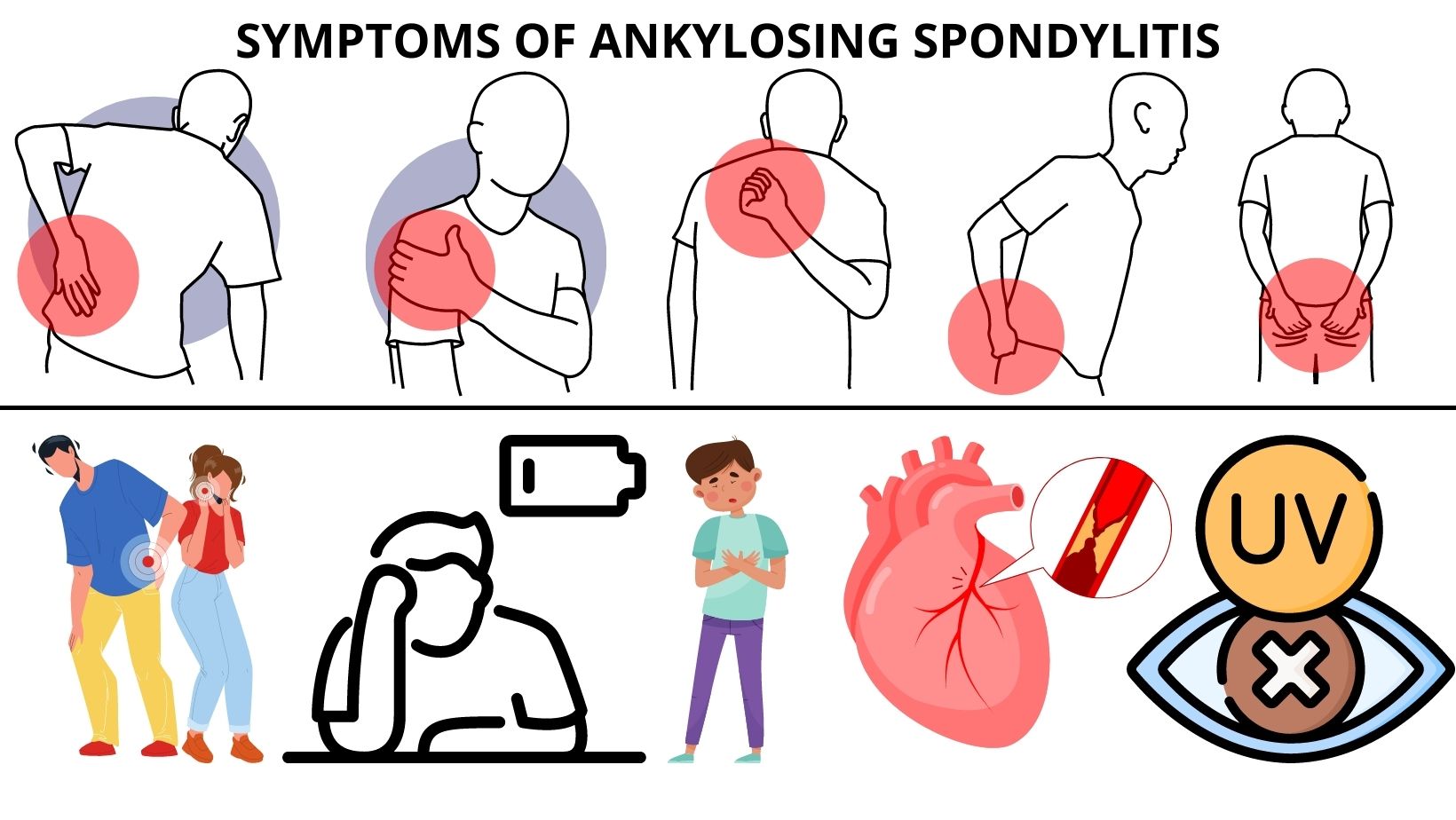 WHAT ARE THE CAUSES OF ANKYLOSING SPONDYLITIS?
WHAT ARE THE CAUSES OF ANKYLOSING SPONDYLITIS?
The exact cause of the disease is not known but there is genetic inheritance and the majority of people who suffer from the disease are born with the HLA-B27 gene. The presence of genes may be detected by a blood test.
DIAGNOSIS OF ANKYLOSING SPONDYLITIS
- Symptoms of pain and stiffness in the back.
- Physical examination.
- X-ray findings
- For early visibility, MRI should be done over x-ray as early changes can’t be detected by simple X-ray.
- Presence of HLA-B27 gene
TREATMENT OF ANKYLOSING SPONDYLITIS
The goal of the treatment is to relieve the pain and stiffness along with delaying the bone changes in the patient.
- Exercise: exercises would help the patient to feel better in pain and stiffness. There are various exercises that are useful in cases of ankylosing spondylitis.
- Swimming is one of the best ways to get rid of pain and stiffness.
- Certain medicines are used to relieve pain and stiffness which don’t give permanent relief.
MANAGEMENT OF ANKYLOSING SPONDYLITIS
- Primary management is to relieve pain and stiffness in the patient.
- Certain exercises are advised to the patient to relieve pain and stiffness.
- Swimming is advised as it is the best exercise for ankylosing spondylitis.
- Aerobic exercises are also encouraged.
- The patient should be advised to bathe with hot water in the morning as hot water would remove stiffness and would help the patient to start the day well.
- The patient should be advised to improve the posture of his body while standing, sitting, and lying down.
- If the patient smokes, then advice to stop smoking should be given.
- Daily breathing exercises should be done by the patient.
- Being active full day would also help the patient to feel better with pain and stiffness.
HOMEOPATHIC MANAGEMENT OF ANKYLOSING SPONDYLITIS
There are various homeopathic medicines that would help in relieving pain and stiffness in the patient. The medicines would also give long-lasting relief to the patient and don’t have any side effects.
DO’S AND DON’TS
DO’S
- Be active.
- Maintain good and appropriate posture while standing, sitting, and lying down.
- Apply hot and cold packs. If inflammation is active apply cold packs and relieves pain and stiffness when the inflammation phase is over apply hot packs.
- Do yoga.
- Do exercise daily.
- Bath with hot water.
- Do brisk walking for 20 minutes at least.
- Do stretching before exercise.
DON’TS
- Don’t smoke.
- Don’t stay in one posture for long.
- Don’t overuse the muscles.
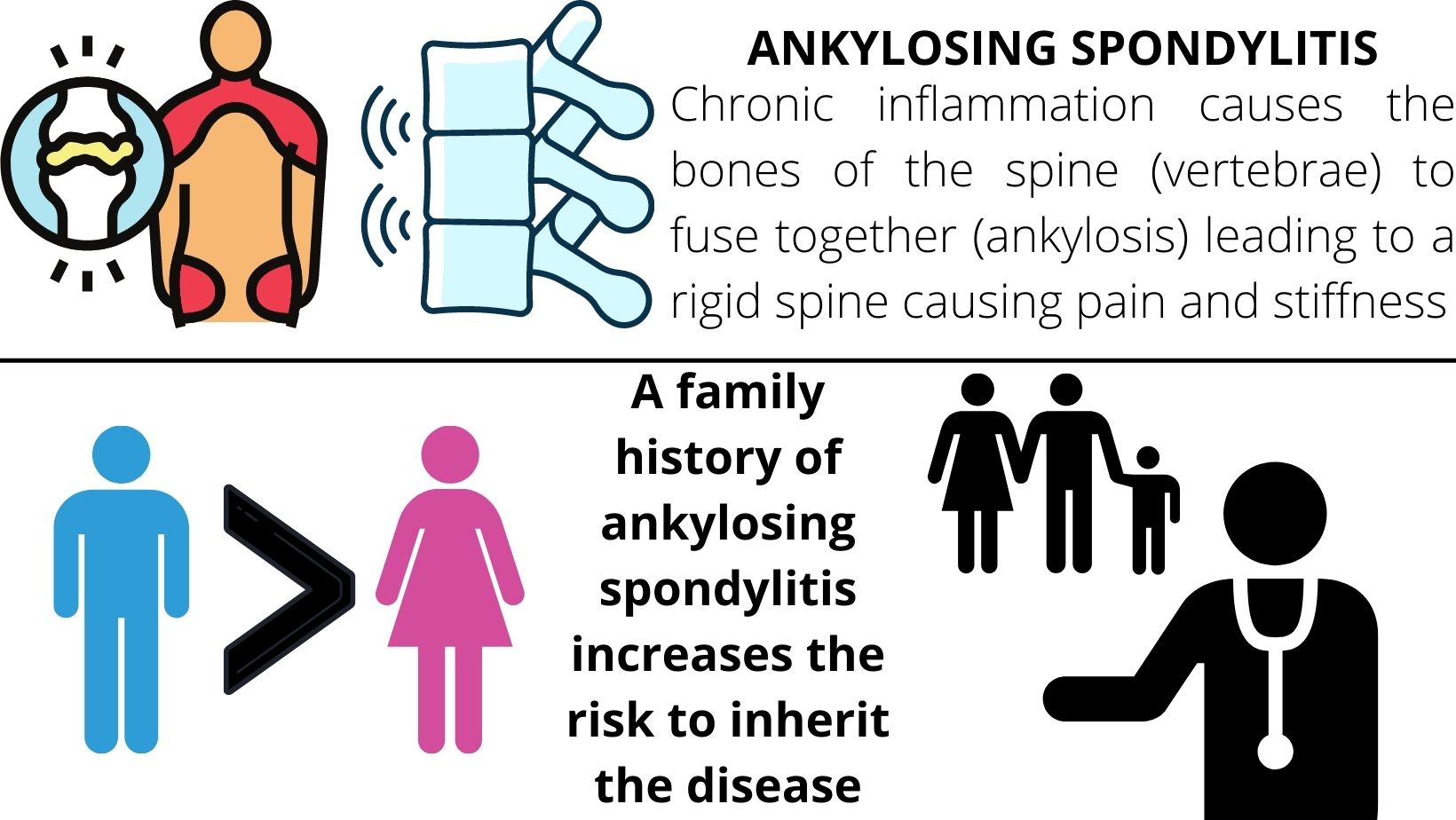
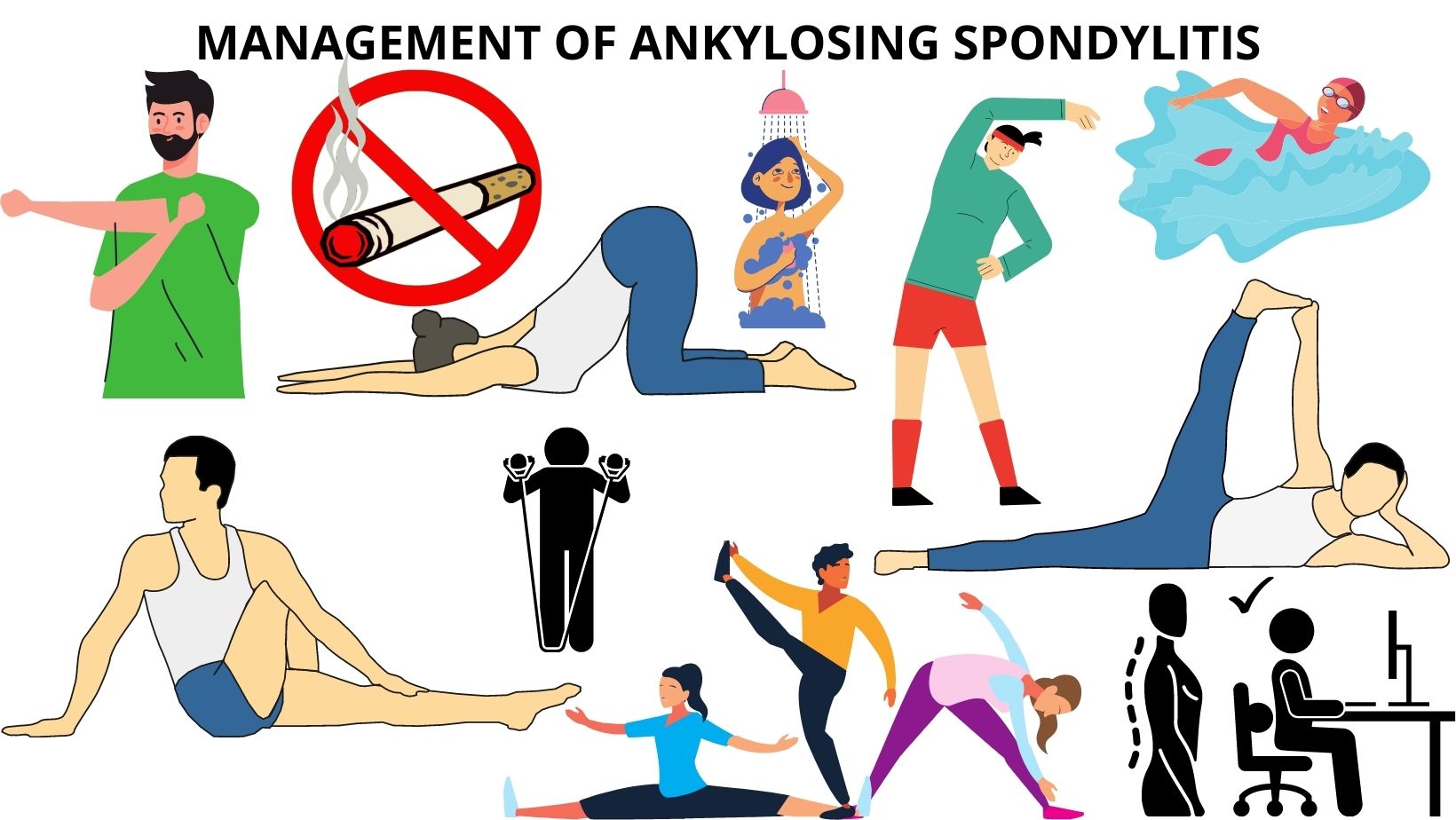
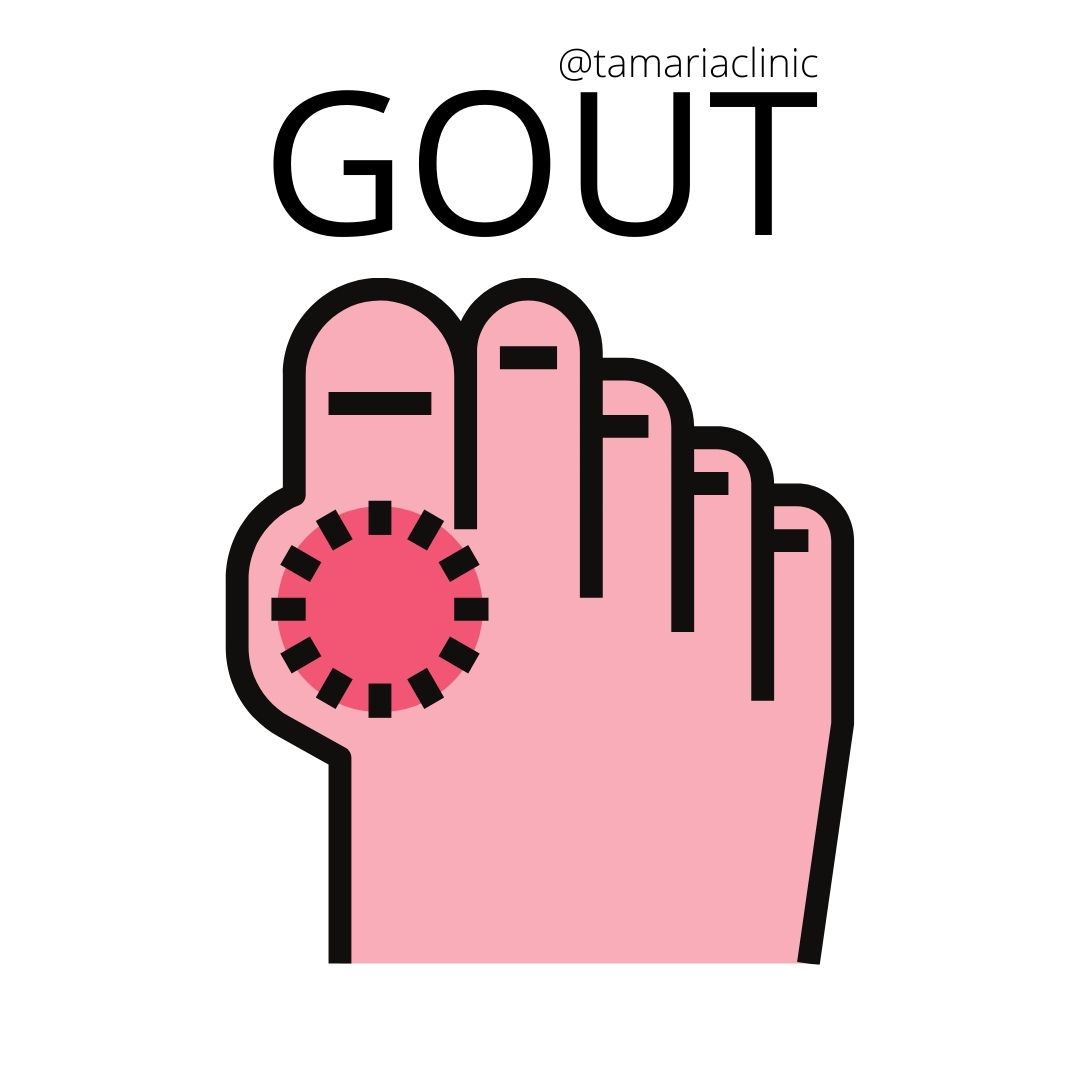
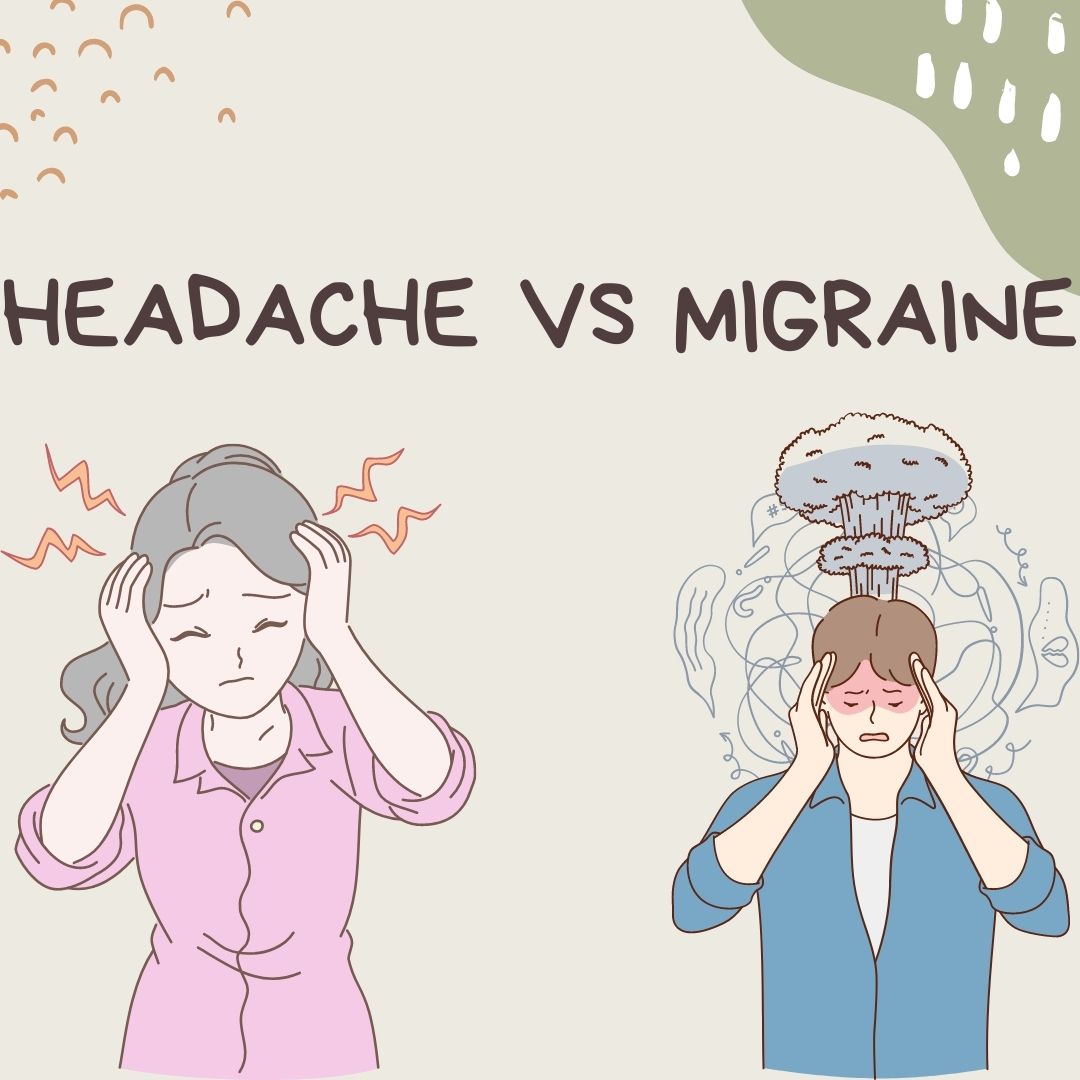
Comments
We have received your comment , Thank You !